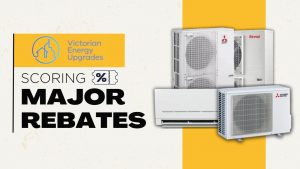Ever walked into a room that’s either freezing cold or still stifling hot, even with the air conditioner blasting? You’re not alone. Many Victorian homeowners wrestle with getting their home’s heating and cooling just right. And often, the culprit isn’t the air conditioner itself, but its size.
Yes, when it comes to reverse-cycle air conditioner, size matters a lot more than you think. It’s not about the physical dimensions of the unit, but its kilowatt (kW) capacity – how much heating and cooling power it can deliver. And here’s the surprising truth: going too big or too small can hit your wallet harder than you’d imagine, leading to inconsistent temperatures, higher energy bills, and even wearing out your system faster.
So, how do you nail down the perfect size for your home? Let’s pull back the curtain on the key factors the pros consider and why understanding them is your secret weapon for year-round comfort and significant savings.
Room to Breathe: Why Every Dimension Counts

It seems obvious, doesn’t it? A bigger room needs a bigger air conditioner. But it’s more nuanced than just length and width. Did you know your ceiling height plays a huge role too? A room with high ceilings requires more energy to heat or cool because there’s simply more air volume to condition.
- Too Small: Imagine a tiny engine trying to power a huge truck. A small reverse-cycle air conditioner in a large room will constantly struggle, running non-stop just to try and reach your desired temperature. This overwork skyrockets your energy costs and shortens the unit’s lifespan.
- Too Big: This might sound counter-intuitive, but a massive unit in a small room is equally problematic. It’ll reach the target temperature too quickly, then shut off, only to turn back on moments later. These frequent, short cycles (called “short cycling”) mean inconsistent temperatures, less effective dehumidification, higher energy consumption, and premature wear and tear on the system.
The goal is to match the system’s capacity to the room’s actual volume for smooth, efficient operation.
Your Local Climate: It’s Not Just About Sunshine
Victoria is a state of diverse climates! The ideal reverse-cycle air conditioner size for a home in sunny Mildura, which experiences scorching summers, will be very different from one in chilly Ballarat, which demands significant winter heating. Even coastal Warrnambool and inland Ballarat have distinct temperature swings due to differing cloud cover.
Your local climate dictates how hard your unit needs to work. An expert considers the typical temperature ranges, humidity levels, and seasonal variations in your specific area. If your home regularly faces extreme heat or cold, it might influence the recommended kW capacity to ensure your system can always keep up, without overworking.
The Insulation Revelation: Your Home’s Invisible Shield

Think of your home’s insulation as its thermal bodyguard. Good ceiling and wall insulation acts like a warm blanket in winter, keeping heat in, and a cool barrier in summer, blocking heat out. It’s crucial for moderating your indoor temperature.
If your home lacks adequate insulation, it’s like trying to cool a sieve – the conditioned air quickly escapes, and outside temperatures sneak in. In such cases, your air conditioner would need significantly more power to compensate, running almost constantly just to maintain comfort. Investing in proper insulation before installing a new reverse-cycle air conditioner can dramatically reduce the required system size and lead to impressive ongoing energy savings.
Home Orientation: Where the Sun Loves to Shine
Here’s a factor many homeowners overlook: the direction your windows face. Imagine two identical townhouses. One has a large, north-facing window in the living room, while the other’s living room window faces south. That north-facing window will let in significantly more heat from the sun throughout the day, especially in summer. Similarly, west-facing windows can absorb intense afternoon sun.
Even if both living rooms are the exact same size, the home with the north or west-facing windows will require a more powerful reverse-cycle air conditioner to counteract that solar gain. This is why a “right size” air conditioner on paper might be completely wrong once your home’s unique orientation is factored in.
Don’t Guess, Get it Right with Plum Heating and Cooling!

Choosing the right reverse-cycle air conditioner isn’t about guesswork; it’s about understanding these critical factors that influence your home’s unique heating and cooling needs. Getting the size right means maximizing your comfort, slashing your energy bills, and extending the life of your system.
At Plum Heating and Cooling, we’re experts in helping Victorian homeowners find their perfect match. We don’t just sell units; we conduct thorough assessments of your home’s specific characteristics—room sizes, climate, insulation, and orientation—to recommend the ideal reverse-cycle air conditioner system for your ultimate comfort and savings.
Ready to stop guessing and start experiencing perfect comfort? Contact Plum Heating and Cooling today for a professional consultation. Let us help you find the perfectly sized reverse-cycle air conditioner that will keep your home comfortable all year long, without breaking the bank!










